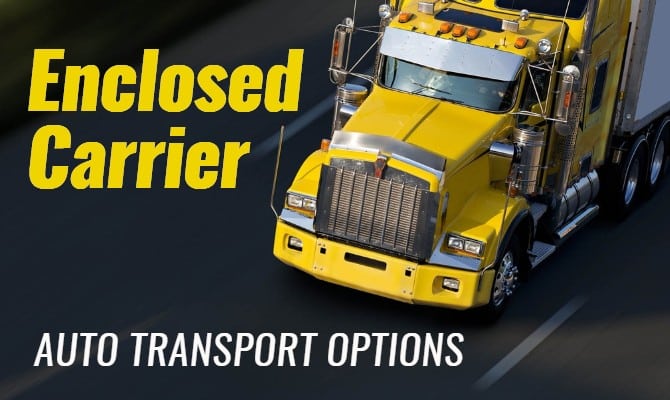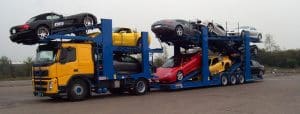Understanding Tesla’s Unique Shipping Requirements
Shipping a Tesla involves a series of specific considerations that distinguish it from transporting conventional vehicles. First and foremost, the car’s electric nature necessitates special attention to its battery system. Tesla vehicles are equipped with high-capacity lithium-ion batteries, which are not only expensive but also sensitive to extreme temperatures. Therefore, it is crucial to ensure that the shipping method chosen maintains a stable environment to prevent battery degradation or potential hazards.
Another critical aspect is the car’s software and electronic systems. Teslas are essentially computers on wheels, featuring advanced autopilot capabilities and numerous sensors. These sophisticated systems require protection from electromagnetic interference (EMI) during transit. Moreover, ensuring that the vehicle is properly turned off and secured in transport mode can help avoid unnecessary battery drain and potential software issues.
The physical dimensions of Teslas also present unique challenges. The low ground clearance of models like the Model S or Model 3 demands careful handling to avoid damage when loading onto carriers or trailers. Additionally, their relatively heavy weight due to the battery pack means that transporters must be equipped to handle this extra load without compromising safety.
Insurance and regulatory compliance add another layer of complexity. Given their high value, comprehensive insurance coverage is non-negotiable when shipping a Tesla. Furthermore, different states or countries may have specific regulations regarding the transport of electric vehicles which need meticulous adherence.
Lastly, communication with Tesla service centers can be beneficial for obtaining guidelines tailored specifically for transporting their vehicles safely and efficiently. By addressing these unique considerations head-on, one can ensure that shipping a Tesla becomes a smooth operation rather than a logistical nightmare.
Selecting The Right Transport Method For Your Tesla
Selecting the right transport method for your Tesla is crucial to ensure that your vehicle arrives safely and in pristine condition. Several factors should guide your decision, including the distance of transport, budget constraints, and specific care needs of the electric vehicle.
First and foremost, consider whether you need an open or enclosed carrier. Open carriers are more economical but expose your Tesla to weather elements and road debris. This might be a viable option for short distances or if cost-efficiency is a primary concern. However, given the high value of Teslas and their sophisticated technology, many owners prefer enclosed carriers despite their higher cost.
Enclosed transport offers superior protection against environmental hazards, reducing the risk of damage during transit.
Another critical consideration is selecting a transporter experienced with electric vehicles (EVs). Teslas have unique features like autopilot sensors and lithium-ion batteries that require specialized handling. Ensure that the company you choose has experience with EVs to mitigate potential risks such as battery drainage or sensor malfunctions during transit.
Insurance coverage also plays a pivotal role in choosing your transport method. Verify what type of insurance is offered by potential carriers and if it adequately covers high-value vehicles like Teslas. Additional insurance may be worth considering to safeguard against unforeseen damages.
Lastly, think about door-to-door versus terminal-to-terminal delivery options. Door-to-door service tends to be more convenient but can be pricier than having your car shipped to a terminal where you pick it up.
By weighing these factors carefully—carrier type, specialized experience with EVs, insurance coverage, and delivery options—you can make an informed decision that ensures your Tesla reaches its destination safely and efficiently.
Preparing Your Tesla For Shipment
Preparing your Tesla for shipment involves several crucial steps to ensure that the vehicle arrives at its destination in optimal condition. First, it’s essential to clean your Tesla thoroughly, both inside and out. This not only makes it easier to inspect for any pre-existing damage but also helps the shipping company document the car’s current state accurately. Removing all personal items from the vehicle is equally important as these can shift during transport and cause damage.
Next, you should deactivate certain features of your Tesla to prevent any issues during transit. For instance, disable the alarm system to avoid false alarms that could drain the battery or cause unnecessary stress for transport staff. Additionally, turn off location tracking services and any auto-pilot features that might interfere with handling during loading and unloading.
Battery charge level is another critical consideration. It’s advisable to keep the battery between 20-50% charged before shipment. A fully charged battery increases weight and potential risk in case of an accident, while a nearly depleted battery may not have enough power if needed upon arrival.
Furthermore, take detailed photographs of your Tesla from multiple angles before shipping it. This documentation will serve as invaluable evidence should any disputes arise regarding damage during transportation.
Finally, consult with your shipping company about specific requirements or recommendations they may have for electric vehicles like Teslas. Some companies might require additional protective measures or specific documentation given the unique nature of electric cars.
By taking these preparatory steps seriously, you can help ensure a smooth and secure shipment process for your Tesla, safeguarding this valuable investment against potential risks associated with long-distance transport.
Insurance And Liability Concerns When Shipping A Tesla
Shipping a Tesla involves unique insurance and liability considerations due to the vehicle’s high value, sophisticated technology, and specific handling requirements. Ensuring proper coverage is paramount to mitigate the risks associated with potential damage or loss during transit. First and foremost, it’s essential to verify whether your existing car insurance policy extends coverage for transportation. Many standard policies may not include shipping-related damages, necessitating supplementary shipping insurance.
When selecting a shipping company, it is crucial to scrutinize their insurance offerings and liability limitations. Reputable auto transporters typically provide basic coverage; however, this might not be sufficient for a high-end vehicle like a Tesla. Confirm the extent of their coverage—both in terms of monetary limits and what types of damages are included. For instance, while minor scratches might be covered under basic plans, more extensive damage such as battery issues or software malfunctions could require additional provisions.
Furthermore, given Teslas’ advanced technology and electric components, specialized knowledge is required for safe handling. The shipper’s experience with electric vehicles should be a key factor in your decision-making process. Companies familiar with Teslas are better equipped to prevent common pitfalls that could lead to costly repairs or depreciation in value.
Documentation also plays a critical role in managing liability concerns. Detailed records of the vehicle’s condition before shipment—including photographs and written assessments—are indispensable should you need to file an insurance claim later on.
Ultimately, ensuring comprehensive insurance coverage tailored specifically for your Tesla will safeguard against unforeseen incidents during shipment, providing peace of mind that your valuable asset is well-protected throughout its journey.
Cost Factors In Shipping A Tesla: What To Expect
Shipping a Tesla involves several cost factors that potential shippers should be aware of to ensure a smooth and economically feasible process. One of the primary considerations is the distance between the pick-up and delivery locations. Shipping costs will naturally increase with longer distances due to higher fuel consumption, increased labor costs, and extended use of transportation equipment.
The choice between open and enclosed transport is another significant factor influencing cost. While open transport is generally more affordable, enclosed shipping provides additional protection against weather elements and road debris but comes at a premium price. Given the high value of Tesla vehicles, many owners opt for enclosed transport to safeguard their investment.
Another crucial aspect is the size and weight of the Tesla model being shipped. Models like the Model S or Model X are larger and heavier compared to the Model 3 or Model Y, which can result in higher shipping fees due to increased space requirements and weight restrictions.
Seasonality can also impact shipping costs. Demand for vehicle transportation services can fluctuate throughout the year, with peak seasons typically leading to higher prices due to increased demand for carriers.
Additionally, expedited shipping options are available for those who need their vehicle transported quickly; however, this service comes at an extra cost. Finally, insurance coverage during transit should not be overlooked as it adds an additional layer of financial protection but may also contribute to overall expenses.
Understanding these cost factors helps in budgeting appropriately for shipping a Tesla while ensuring that the vehicle arrives safely and efficiently at its destination.
Timing And Scheduling: Coordinating Your Tesla’S Shipment
Timing and scheduling the shipment of your Tesla involves careful coordination to ensure the vehicle arrives safely and on time. First, it’s crucial to understand that Tesla shipments can be subject to specific lead times due to the high demand and unique production schedules of these vehicles. Therefore, planning well in advance is imperative. Contacting your shipping company early will allow them to accommodate any special requirements you might have, such as enclosed transportation for added protection or expedited delivery options.
When coordinating with a shipping company, consider the seasonal variations that could affect transit times. For instance, winter weather conditions may slow down transportation due to snow or icy roads, while summer heat can also pose challenges. It’s wise to discuss potential delays with your logistics provider so you can set realistic expectations.
Moreover, be aware of any regional holidays or peak periods that might affect both pick-up and drop-off schedules. For example, end-of-year holidays often see increased shipping volumes which could lead to delays.
Another essential aspect is ensuring all necessary documentation is prepared ahead of time. This includes ownership papers and any relevant permits for interstate travel if applicable. Providing accurate information about your Tesla’s condition will also facilitate a smoother process.
Furthermore, tracking capabilities offered by many modern logistics companies provide real-time updates on your vehicle’s journey. Utilizing these tools allows you to monitor progress closely and adjust plans if necessary.
By meticulously planning the timing and scheduling aspects of your Tesla’s shipment, you mitigate risks associated with delays or unforeseen complications, ensuring a seamless transition from point A to point B.
Receiving And Inspecting Your Tesla Post-Shipping
Once your Tesla has arrived at its destination, the process of receiving and inspecting the vehicle is crucial to ensure it remains in optimal condition. Upon delivery, first, conduct a thorough external inspection. Examine the body for any dents, scratches, or other signs of damage that could have occurred during transit. Pay particular attention to areas like the bumpers and side panels which are more susceptible to impacts.
Next, move on to the wheels and tires. Verify that there are no punctures or significant wear that might have resulted from improper handling during shipping. Additionally, check for any inconsistencies in tire pressure using a reliable gauge; under-inflated or over-inflated tires can affect vehicle performance and safety.
The interior inspection is equally important. Open all doors to ensure they function smoothly without unusual noises or resistance. Inspect the seats, dashboard, and other surfaces for tears, stains or any anomalies that were not present before shipping. Test all electronic systems including the touchscreen display, navigation system, and climate controls to confirm they are working as intended.
Don’t forget to check under the hood as well as beneath the car for any leaks or loose components. Given Tesla’s advanced technology features like Autopilot and regenerative braking systems, it’s imperative these functionalities are assessed too.
Lastly, document any damages immediately by taking photos and noting down details. Contact both your shipping company and Tesla customer service promptly if discrepancies arise. This ensures you retain strong grounds for claims or repairs covered by warranties or insurance policies.
By conducting a meticulous inspection upon receiving your Tesla post-shipping, you help safeguard your investment while ensuring continued enjoyment of its innovative features and superior performance capabilities.








